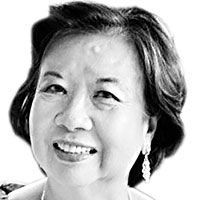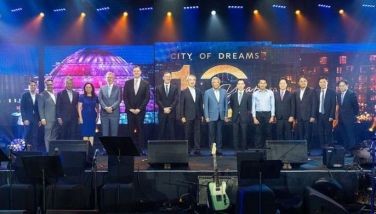A journey to Arayat

Tomorrow I go to Arayat. I have been invited by Jose Alejandrino of the fifth generation to celebrate the 144th Pagdiriwang ng Araw ni Heneral Jose M. Alejandrino. The Jose Alejandrino of today has become a member and adviser to Bayanko, a crowdsourcing movement for a new constitution for the Philippines. That new constitution, this column hopes, will restructure our government.
To me, Arayat is a mythical place, lost in memories of overheard conversations as a child. I come from Paete, Laguna that we reach by traveling south of the highway from Manila. At its entrance of Paete is a narrow path leading up to the mountains that I dreaded because the elders whispered that is where the “Huks” lived. They lived trekking mountains, up and up as far as Arayat.
But where is Arayat and why there? Like all childhood memories of overheard adult conversations, they are lost in time.
Huks were known then as bandits. In a way, the distance I traveled from that childhood to make my journey tomorrow is my Ithaca – long and perilous but rewarding.
* * *
Who is General Jose Alejandrino y Magdangal? He was not in the list of prominent heroes we memorized in our history lessons in school. A short account in Wikipedia says that in 1898, he served in the Malolos Congress and that he was in two committees which drafted the Malolos Constitution. Later, he was appointed by President Emilio Aguinaldo as director of Agriculture, Industry and Commerce.
He was also known as a brilliant military strategist and together with Gen. Antonio Luna designed the strategies that were adopted during the Philippine wars of independence. Aguinaldo appointed him Chief of the Engineers of the Army. While in that position, he directed the building of trenches in several areas, including those that were built in Bulacan and Caloocan.
Alejandrino and his friend, General Antonio Luna, suggested to Aguinaldo that they build a defensive line from Novaliches to Caloocan to delay the northward advance of American troops who wanted to capture the railway. The railway was significant in the race between Americans and Filipinos to capture Manila.
But the infighting among Filipinos took a heavy toll on the revolution. In the future political analysts will point to this infighting as the reason why Filipinos lost the game to the Americans and ultimately their war for independence that they had won against the Spaniards. With the solid front of the revolutionaries weakened Aguinaldo surrendered to General Frederick Funston on 29 April 1901. The man we honor today, General Alejandrino y Magdangal accepted an offer to serve as the second city engineer of Manila. He died on June 1, 1951, 63 years ago.
* * *
As for Arayat, a mountain I once feared, I am happy to be visiting the place tomorrow for the first time. One family seems to have sustained the town through thick and thin – the Alejandrino family and it is a blessing that they kept memories of the family’s political exploits. I want to see whether there is anything about it that should have as its members such dedicated patriots even if they belonged to opposite sides of the political spectrum.
There are both ambassadors, wealthy financiers as well as a Huk leader and labor organizers within the family.
Ambassador Jose Alejandrino y Medina organized the workers of Pambusco and Pasudeco into labor unions. He is known more for his career in the foreign service who made many friends for the Philippines, among them General de Gaulle himself. It is less known that he was a militant labor leader who had organized strikes that paralyzed Central Luzon in the late 1930s.
According to one report he was responsible for organizing the strikes which paralyzed Central Luzon in the late 1930s, forcing Commonwealth President Manuel Quezon to grant benefits to the workers. Anti-labor sectors tried once to assassinate him and he had to go around carrying a Thompson submachine gun for his protection.
While he was organizing the workers, his cousin Casto was organizing the peasants against the landlords and became a top leader in the Hukbalahap movement. What sort of place is Arayat that it should breed such men committed to the poor and labor? I will soon find out.
* * *
I googled for Arayat, the mountain. It says “that the mountain is the home of the god /sorcerer named Sinukuan/Sinukwan or Sucu, which could mean “The end” or “he who others have surrendered to.” Wikipedia adds that “the mountain was said to have been located in the swamp to its south but relocated because of the evil ways of those who lived there, in addition to whic, the people of the swamp were made to suffer numerous misfortunes.” Interestingly Sinukuan according to the folklore is able to transform and do as pleases himself to and his only real rival is Mount Pinatubo. Pinatubo has erupted so what can we expect of Arayat in the near future.
“In other legends, Sinukuan is said to have bested Makiling of southern Luzon almost effortlessly unlike his arch rival Namalyari. Sinukuan is believed to have daughters who come down only during time of grace and are disguised as humans, Sinukuan himself can be disguised as human. The day he comes back is believed to either be when he responds to the attack of Namalyari on Mount Pinatubo’s 1991 eruption or when the time to call his servants upon the end of the world has come.”
- Latest
- Trending

























